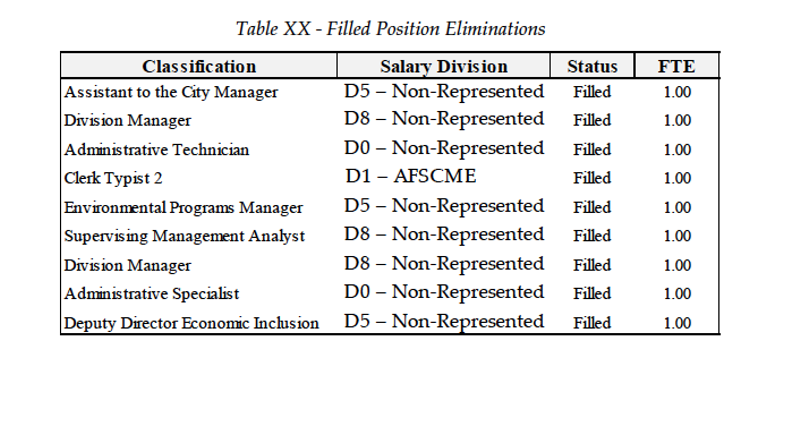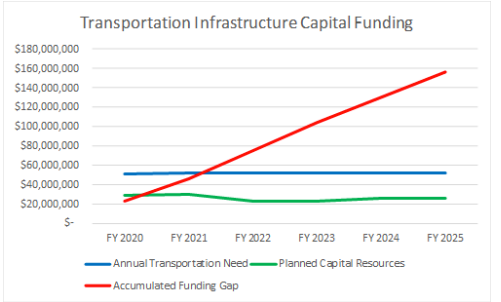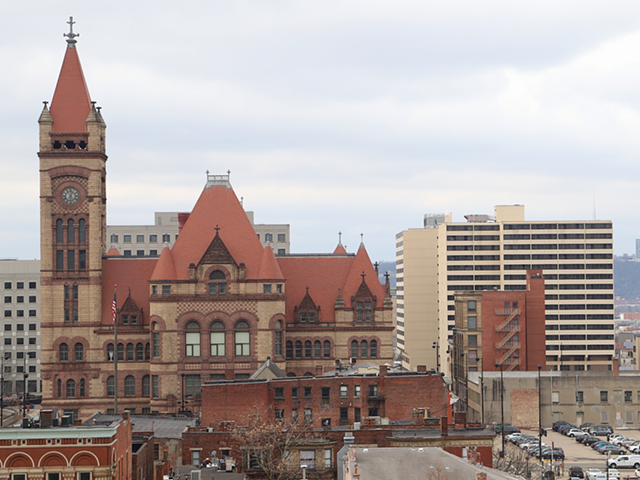Cincinnati City Manager Patrick Duhaney today released his suggestions for the city's biennial capital and operating budgets.
The latter $1.1 billion spending plan addresses what was expected to be an $18.9 million deficit in 2020 with reductions in city positions (without layoffs), a hiring freeze and big cuts to outside organizations that the city helps fund to do beautification, neighborhood support, violence prevention, jobs programs and others.
The work of bridging that deficit was made slightly easier by better-than-expected income tax revenues — an estimated $8 million in 2020. And Duhaney suggests other new revenue — eliminating an exemption to the city's ticket tax that could generate an extra $200,000 and a boost to stormwater management rates that could cost the average user roughly $1.15 a month.
That last move is expected to raise about $2.3 million, which the city will use to pay for services that once took money from the general fund — raising revenue without raising taxes by instead raising fees on specific services.
But expenses and continued reductions in funding via the state's local government fund means that the city still has to trim $16 million from the budget.
The overall capital and operating spending plan isn't all cuts — it boosts funding for the city's Department of Public Services, including money for 12 new full-time employees and materials for road repair and other fixes provided by boosts to the state's gas tax and a recommended $5 vehicle license fee increase that council will have to approve. The budget also provides for a 30-person Cincinnati Police recruit class that will start in November, as well as expanded staffing for the city's Emergency Call Center.
The proposal would also provide money for the city's human services fund at levels council has requested for years.
"It is fair to say that at times this budget looked dire," Duhaney wrote in the introduction. "However, I am pleased to announce that despite that rough outlook, we are not proposing the closure of any recreation centers, pools, parks, or the shuttering of any health centers."
Operating Budget
The cuts to 67 city positions wouldn't necessarily mean layoffs, Duhaney writes — most of those positions are unfilled, and city employees occupying the remaining nine will be offered other positions with the city, though some would take a pay cut.
The positions the city would eliminate include Office of Environment and Sustainability Director Larry Falkin, who has headed up a number of the city's lauded environmental efforts. The full list of eliminated positions is as follows:
One of the biggest flashpoints in past budget negotiations has been a relatively small portion of the spending plan for what the city calls leveraged support — money for organizations that do community and social service work.
The budget proposal released today would increase money to the city's Human Services Fund, which is doled out to nonprofits via a process overseen by United Way of Greater Cincinnati. Under Duhaney's spending plan, that fund would reach $4.9 million, or 1.2 percent of the city's operating budget — a level council asked for years ago but which the city has struggled to achieve.
But Duhaney's budget sharply cuts or eliminates funding for many other organizations receiving city money.
City support for COMPASS (an immigration welcoming service through the city's chamber of commerce), the African American Chamber of Commerce, tech and business incubators, Cincinnati Neighborhood Games, Invest in Neighborhoods, Neighborhood Business Districts, a summer youth jobs initiative, a violence prevention plan overseen by United Way and a small sum for the Corporation for Findlay Market are all zeroed out in the budget proposal, among others.
Support for the Cincinnati Center City Development Corporation's management of city-owned Washington Park and Ziegler Park, along with money for The Port, remain, though Duhaney suggests cutting $57,820 from city money provided to 3CDC for Fountain Square. The Port will repay the funds it receives from the city over time.
Some of the cuts involve organizations that have seen controversy.
Duhaney suggests zeroing out Keep Cincinnati Beautiful, which saw questions about its finances in 2017 that led to the resignation of its director.
Like last year, Duhaney also suggests cutting funding for the Center for Closing the Health Gap, the organization founded by former mayor Dwight Tillery.The city manager and mayor sought last year to zero out funding for the Health Gap in the city budget, but a veto-proof majority of council put the money back in October as part of a larger spending package.
In 2016, media reports raised questions about the organization's spending on a program that provided fresh fruit to convenience stores and a few thousand dollars invoiced to the city by the Health Gap for Black Agenda events. The Health Gap later returned that money after the city said it represented improper spending on political events.
Mayor John Cranley has said that the Health Gap should go through the same process overseen by the United Way of Greater Cincinnati that other nonprofits apply to in order to get city funding.
Other cuts are also likely to spark battles. Also zeroed out again is about $78,000 in funding for the Center for Addiction Treatment, or CAT House, a long-running nonprofit that helps address opiate and other drug addiction issues from a facility in the West End. Duhaney cut that program last year, but Council added funding for CAT via a later vote.
Capital Budget
On the city's capital side of the budget, Duhaney proposes spending $295 million in 2020. Among the big concerns moving forward in terms of capital needs are the city's looming funding gaps for infrastructure maintenance.
According to Duhaney's budget, the difference between capital resources and needed funds to keep the city's transportation infrastructure in current condition will be between $25 million and $29 million a year starting in 2020. If unaddressed, Duhaney's budget says, the accumulated gap will reach more than $156 million by 2025.
"City facilities and transportation infrastructure are among the most utilized and essential capital assets owned and maintained by the City of Cincinnati," the budget report reads. "Due to diminishing capital resources, many of the routine capital projects have been reduced and deferred over the years, adversely impacting the overall condition of the City infrastructure. The following needs assessment reports demonstrate the widening gap between annual needs and planned capital resources for select General Capital supported transportation infrastructure and City facilities."
There are similarly dire warnings in the budget related to city facilities — municipal buildings and assets like parks and recreation centers. If gaps between capital resources and maintenance needs aren't closed, the city could be behind by as much as $61 million by 2025, according to Duhaney's budget.
"The current trajectory of deferred maintenance at City facilities is unsustainable," the budget proposal reads. "Significant increases in funding are necessary to sustain operations across all departments to continue to provide services at present levels into the future. If additional funding sources do not become available, the closure of City facilities will become unavoidable as the infrastructure becomes too expensive to maintain even on an emergency basis. All City departments will continue to maintain facilities with the greatest efficiency possible."
The budget next goes to Mayor John Cranley, who has 15 days to make potential revisions. It will then be presented to Cincinnati City Council, which will make its own amendments and vote on the spending plan — likely June 19, ahead of the fiscal year starting July 1.
In the meantime, council's Budget and Finance Committee will hold public input sessions about the budget on the following days at 6 p.m.:
• May 29 at LeBlond Recreation Center (2335 Riverside Drive, 45202)
• June 3 at the University of Cincinnati's Innovation Hub (2900 Reading Road, 45206)
• June 4 at Madcap Theater (3064 Harrison Ave., 45221)









